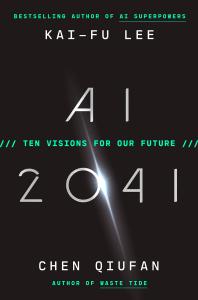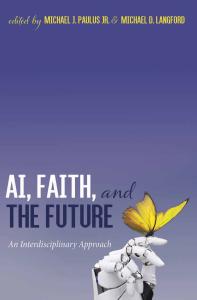I recently gave two presentation on data and identity. One was at the Christian Transhumanism Conference and the other at a continuing legal education program on AI (slides here and here). While each presentation was adapted to a rather different audience, both focused on how digital data is now part of our understanding of identity.
I began both presentations with a discussion of Flatland: A Romance of Many Dimensions. This Victorian novella is about different types of intelligent beings whose consciousness and forms are confined to different dimensions. Those who exist in no dimension live in Pointland; those who exist in one dimension, Lineland; those who exist in two dimensions, Flatland; and those who exist in three dimensions, Spaceland.

The narrator, A Square from the second dimension, asks the reader to consider how creatures in his world would become aware of a third dimension. A sphere, descending through Flatland’s plane of existence, would begin as a point, expand into a circle, and then contract to a point again before disappearing. The Flatlanders would have no conception of its solidity, or of the sphere’s past or future existence beyond their plane.
Because of its creative consideration of other dimensions, Flatland can be found on syllabi in various disciplines from Math to Theology. And I think it is helpful resource for thinking about our existence in our so-called digital age. Are we, like the two-dimensional narrator in Flatland, trying to imagine how our reality is open to another dimension called “digital”?
I have been hugely influenced by the work of Luciano Floridi, who argues that we are living through an information revolution that is reconfiguring and re-ontologizing our lives and world. Over the last 100,000 years, our species has evolved from users of simple stone tools to creators of increasingly complex ideas, institutions, information and communication technologies, and artificial intelligent agents. Floridi argues that our information society is like a wildly growing tree that is at risk of being uprooted; it is time to start digging deeper to understand and attend to what is happening.
At the foundation of our emerging technological environment is data—big digital data about the details of our daily lives, the economy, and the physical world. In Tools and Weapons, Microsoft’s Brad Smith points out that, “While data has always been important to society, it has never played the role it does today … every aspect of human life is fueled by data.” And with artificial intelligence, he adds, “we’re doing more with data than ever before.”
With big data we are realizing new personal, economic, and public values and vulnerabilities. This data can be used to enhance or reduce the quality of our lives, extending or inhibiting what we are able to do and who we may want to become. Moreover, our social selves, our self-conceptions, and our personal identities are all shaped by the data we create, encounter, and exchange. And as we increasingly extend our lives through digital interactions, the boundaries of our identities are becoming more porous. Data is not just something we may own, which can be taken from us (like a hammer); data constitutes part of us (like a hand).
As digital sociologist Deborah Lupton points out, “The phenomenon of personal digital data poses a challenge at an ontological level.” Such data is private and public, owned by and part of people, and challenges “the ontological boundaries between the binary oppositions of Self/Other, nature/culture, human/nonhuman, and living/dead.”
After the second presentation, the focus turned to property and privacy law. But in the first, I began to outline theological approaches to the new digital dimension of our lives. Very roughly, I suggested three.
The first approach is protological and emphasizes original creation, which is the focus of Jacob Shatzer’s Transhumanism and the Image of God. The second approach could be called incarnational, since it focuses on Christ’s person and work, which is what Craig Gay does in Modern Technology and the Human Future. The third approach is eschatological and focuses on teleological transformation, for which Michael Burdett’s Eschatology and the Technological Future provides a helpful foundation.
All three approaches have important insights to offer, but they can be correlated with three different responses to our present information revolution (as identified by Floridi): rejection, critical acceptance, and proactive design.
The protological approach leads to a focus on the origin of our species and the restoration of something lost before what Harari calls the “tree of knowledge mutation.” This approach can support a rejection of technological innovation and progress, which can be viewed as a consequence of the fall (see, e.g., Ellul’s notion of counter-creation).
The incarnational approach drops us into the middle of the first century, and we can sort of get stuck there with Jesus. This approach may consciously tolerate new technologies, but it tends to privilege a pre-industrial relationship with technology (see, e.g., Borgmann’s device paradigm).
The eschatological approach, however, looks to the image of New Jerusalem—a technologically complex image of the full realization of the ultimate telos, the cosmic scope of the incarnation, and what it means in the end to be created in the image of God: creative, relational, contemplative. With this end in view, this approach may engage the information revolution and the new digital dimension of our reality with an ethic of proactive design. One might go even further and call it apocalyptic design.















